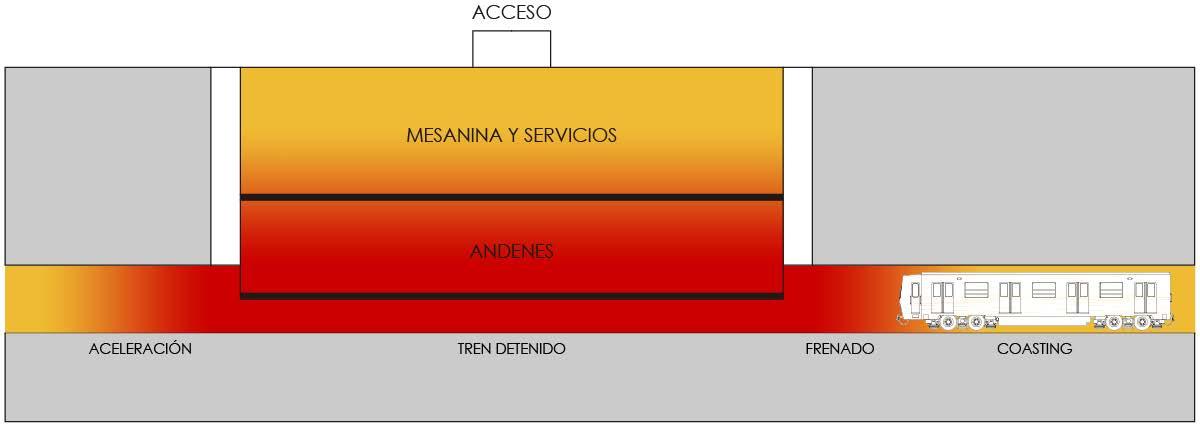
25 minute read
URBAN OASIS: A THERMAL RETROFITTING PROPOSAL FOR THE SANTIAGO METRO
Recibido 18/08/2019 Aceptado 04/11/2019 17
Advertisement
ESTEBAN OMAR BUGUEÑO LARA Magister Integrado en Diseño Arquitectónico Estudiante de Tesis de Magister Universidad de Santiago de Chile, Santiago. Chile https://orcid.org/0000-0001-5627-886X ebuguenolara@gmail.com
RESUMEN Las estaciones subterráneas del Metro de Santiago pueden llegar a experimentar temperaturas de alrededor de 32ºC en la zona de andenes durante la época estival, afectando directamente a los usuarios del transporte público. Situaciones similares se repiten en otros sistemas ferroviarios subterráneos del mundo y las soluciones implementadas no han logrado resolver el problema por completo, lo que se traduce incluso en altos costos de operación y mantención. Este trabajo expone una propuesta de acondicionamiento térmico pasivo que toma como caso de estudio la estación Tobalaba L1 del Metro de Santiago. Aprovechando los pozos de ventilación existentes, se simuló un sistema de enfriamiento evaporativo que busca reducir la temperatura al interior de la zona de andenes y, al mismo tiempo, contribuir a reactivar el espacio público en la superficie. La solución propuesta permitió una disminución de la temperatura promedio de 2,5ºC en verano y 3,6ºC en invierno, evidenciando que es posible llegar a igualar los alcances de algunas soluciones activas, pero con menores costos involucrados gracias al nulo gasto energético y al aprovechamiento de las preexistencias; y con mejoras en las condiciones del espacio público dada la incorporación del factor cualitativo aportado por la arquitectura.
Palabras clave Climatización, estaciones de subterráneo, espacio público.
ABSTRACT The underground stations of the Santiago Metro can experience temperatures of around 32°C in the platform area during the summer season, thereby directly affecting public transport users. Similar situations occur in other subway systems of the world and the solutions implemented have not been able to solve the problem entirely, even resulting in high operating and maintenance costs. This article presents a passive thermal retrofitting proposal that takes the Tobalaba L1 Santiago Metro station as its case study. Taking advantage of the existing ventilation shafts, an evaporative cooling system was simulated that seeks to reduce the temperature in the platform area and at the same time contribute to reviving the public space on the surface. The proposed solution made it possible to decrease the average temperature 2.5°C in the summer and 3.6°C in the winter. This demonstrates that it is possible to match the scope of some active solutions, but with lower costs associated with zero energy consumption and the use of existing elements, and with improvements in the conditions of public space by incorporating the qualitative factor from architecture.
18 Oasis urbano: Una propuesta de acondicionamiento térmico para el metro de santiago Esteban Omar Bugueño Lara Revista Hábitat Sustentable Vol. 9, N°. 2. ISSN 0719 - 0700 / Págs. 16 -29 https://doi.org/10.22320/07190700.2019.09.02.02
INTRODUCTION
HEAT IN METRO STATIONS
Year after year, in Santiago Metro there are repeated scenes of people fanning, shaking the shirt and, above all, sweating a lot, due to high temperature recorded inside stations, mainly underground, where temperature of around 32ºC (Liencura, 2019) can be reached. Temperature-related environmental quality problems have a variable incidence throughout the year, but they are commonly associated to summer period (September to March).
Various journalistic sources link high temperature fundamentally to the central section of Metro line 1 (between Estación Central and Tobalaba), attributing this situation, on the one hand, to “... the greater influx of passengers caused by the implementation of Transantiago” (“Mega fans were installed”, 2010) and, on the other, to “... the highest frequency of trains that travel in that section (main source of heat generation)” (Metro S.A., 2013). For the study of internal thermal loads in the Metro, it is important to know the spatial and temporal situation of light bulbs, distinguishing differentiated regions, which are outlined in Figure 1. The areas of platforms and train circulation concentrate the greatest amount of internal loads, while access and mezzanine areas are considered to be outside the study because they contain less obvious loads.
Heat generated by the operation of trains constitutes, by far, the main existing load (92%), mainly due to the braking system that occupies about half of the total internal thermal load. Then the facilities follow with (6%) and in smaller quantity the occupants (2%) (Figure 2).
Exposure to very hot environments can lead to a series of consequences, which affect passengers and Metro staff alike. Here you can distinguish both annoyance and discomfort, as well as health conditions, in the most serious cases. In addition, this also results in social exclusion of those people who may be more vulnerable to the effects
Figura 1. Scheme of internal thermal loads. Source: Made by the author.
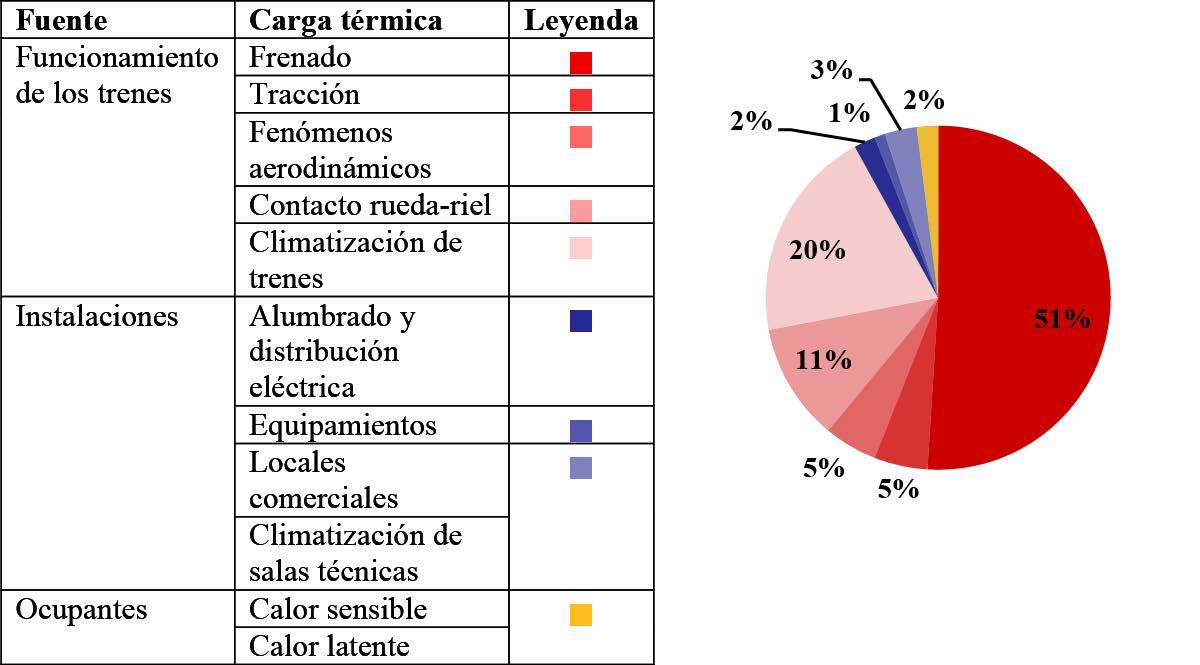
due to their specific condition (infants, elderly people, pregnant women, etc.).
MEASURES ADOPTED TO FACE THE PROBLEM
PASSIVE VENTILATION SYSTEM
In underground stations, where the problem is more critical, the heat generated must be evacuated to the outside of the system. The main sumps are, in this sense, the atmosphere and, to a lesser extent, the surrounding terrain. That is why ventilation has become the main cooling alternative, constituting a system that operates through the following components:
Extraction wells: They are located in the vicinity of the midpoint of sections of the inter-station tunnel and their function is to extract hot air from inside (Figure 3).
Compensation wells: They are located in the input and output sprockets of each station. Its function is to avoid the discomfort of air generated by the piston effect, a phenomenon that occurs when the train traveling through the tunnel, pushes the air that is in its path so that before this, a layer of air is generated with pressure higher than normal (Figure 4).
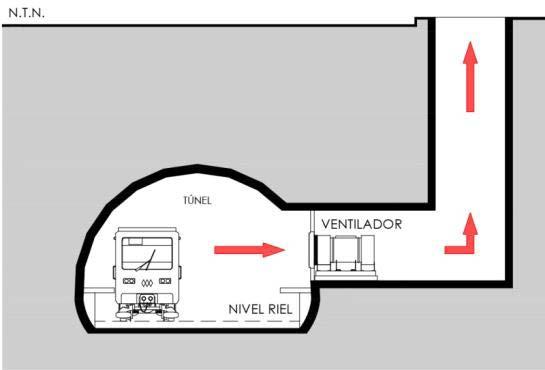
Figura 3. Cross section of extraction wells. Source: Made by the author based on Herrero (2009).
Immission wells: They are located on the platform and through them air is propelled from the outside with the help of fans in order to increase air renewal. Generally, immission wells are omitted (with few exceptions), when, instead, the entry of air from the outside is associated to compensation wells in periods where the piston effect does not occur (Figure 5).
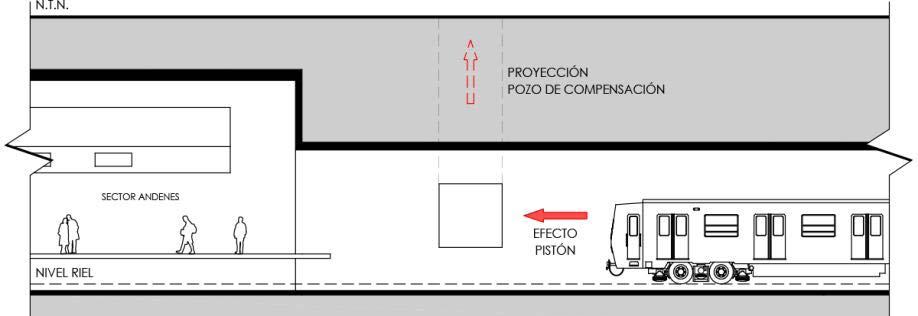

ACTIVE VENTILATION SYSTEM
As a way to complement passive ventilation systems, which do not solve the central problem, Metro company has implemented summer plans that include the incorporation of air-conditioned trains and active ventilation systems in stations, with investment costs that only up to 2010 exceeded $ 2,000,000,000 (Metro S.A., 2010). Specifically, at present, the recent summer plan 2018-2019 considered the installation of 106 mega-fans in 8 different stations, the installation of doors with ventilation grilles on cars of lines 2 and 5, and the provision of air conditioning for the complete fleet of lines 1 and 6 (“With 106 fans”, 2018).
Figure 6 shows the installed park of active ventilation systems to the year 2015 in Metro stations, where the following are noticed:
Nebulizer fans: Ventilation equipment using a high pressure electric pump and special nozzles to cool the air temperature using water mist.
Conventional fans: Ventilation equipment that increases the movement of air masses inside.
Mega fans: Industrial ventilation systems that take advantage of the piston effect to induce the movement of hot air masses through it by generating an additional air flow. They operate by means of lattices and/or fans that can be both injection and extraction, depending on the need.
Tunnel fans: Industrial ventilation systems installed in the extraction wells, which aim to strengthen indoor air intake.
SOLUTIONS IMPLEMENTED IN OTHER COUNTRIES
SÉ STATION, SÃO PAULO METRO, BRAZIL
In Sé station of São Paulo Metro, passive conditioning strategies were implemented where large openings were located towards Praça da Sé, a large open public space that incorporated vegetation and water mirrors. The strategy sought to implement the evaporative cooling technique, whereby the air entering the station lowered its temperature due to the effect of water provided by the environment. However, due to São Paulo weather, characterized by the high presence of relative humidity, evaporative cooling proved not to be feasible, since it requires a particularly dry climate (Figure 7).
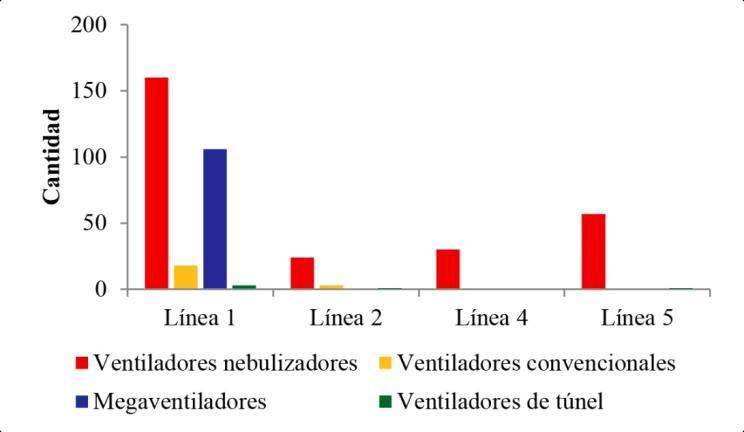
Figura 6. Active ventilation equipment park per line. Source: Made by the author based on Metro S.A. (2015).
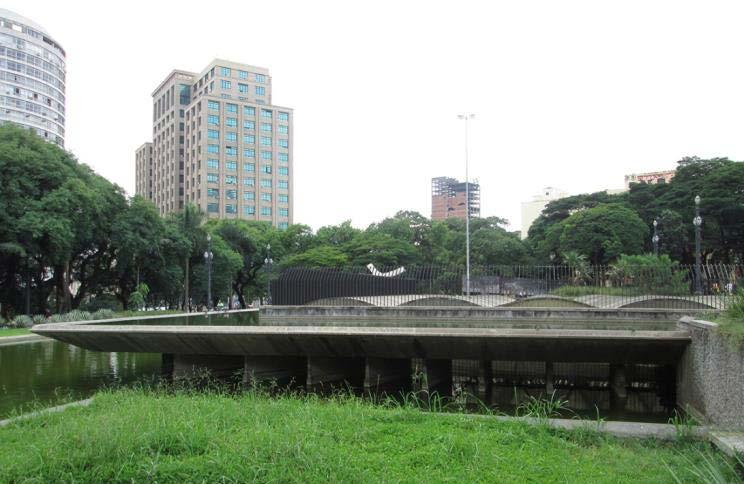
Figura 7. Link between Praça da Sé and Sé Station. Source: Author photo
PACIFIC STATION, MADRID METRO, SPAIN
A geothermal system based on the use of subsoil temperature as an air conditioning system was incorporated in the Pacific station of Madrid Metro. In this, a geothermal heat pump mechanism is used employing the subsoil, in winter as a heat source, and, in summer as a heat sink, in order to maintain stable temperature levels throughout the year. This pump is connected to the subsoil through a terrestrial heat exchanger that allows conduct the thermal load (Figure 8).
NORTHERN LINE, LONDON UNDERGROUND, UNITED KINGDOM
In the Northern Line of London Underground, and taking into account the oceanic climate of the city, the heat generated by the system is used to heat homes by incorporating air capture tubes that divert heat to the heating network of the power plant of Bunhill Council, which in turn connects with hundreds of homes that can make use of thermal energy through radiators (Figure 9).
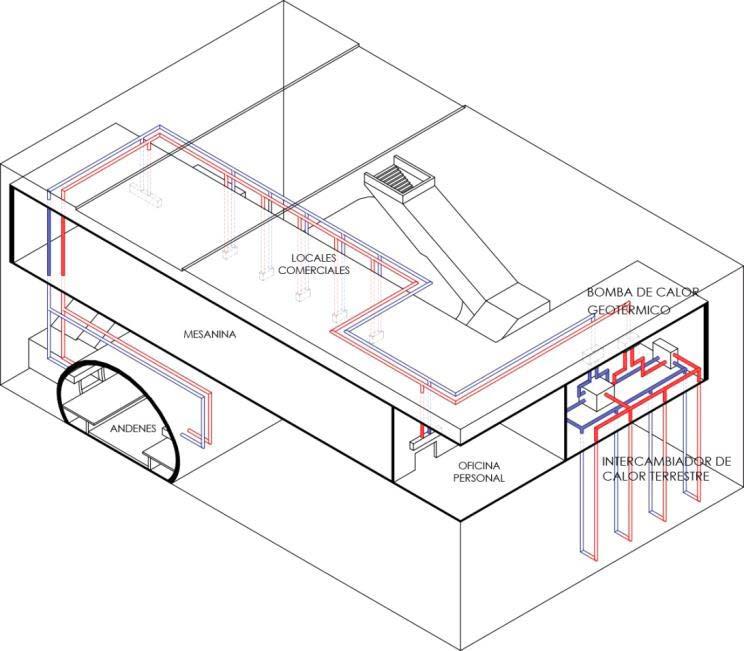
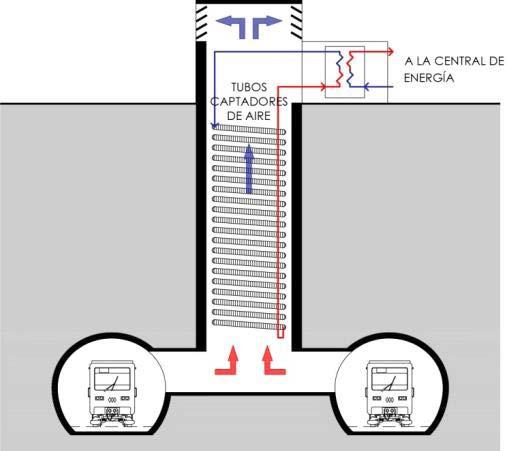
Figura 8. Operation of the geothermal system. Source: Made by the author based on Hendriks, Cubillo and Cuesta (2011).
METHODOLOGY
For the study and diagnosis, it was decided to work based on the key variables of the problem: ambient temperature, ventilation and air humidity. Solar radiation goes to the background, since in underground stations - considered the most critical typology in this context - the problem is fundamentally linked to internal thermal loads.
In order to respond to the problem, a case study was determined in which an intervention proposal was developed, having as conditions the use of pre-existing and the incorporation of passive conditioning strategies to achieve a replicable and low-cost design. The proposed alternative was subjected to evaluation and analysis based on what exists to validate the working hypothesis.
FIELD MEASUREMENTS
It was sought to determine the temperature and humidity levels inside the station, through biweekly records (working day and weekend) for 2 weeks each month, between the months of October and March. The measurements were carried out at peak morning hours, valley hours and late afternoon hours, to then average the results.
An EXTECH model 44550 environmental thermometer was used, considering an acclimatization period of 5 minutes for taking results.
Outdoor weather data were obtained from Norwegian Meteorological Institute data (The Norwegian Meteorological Institute, 2016), extrapolated to the location of the station under study, according to its coordinates.
Figura 9. Operation of the heating system in the Northern Line. Source: Made by the author based on Arden (2013).
Type Parameter Time table
Low Morning peak Valley Evening peak
Activity Occupation (people/m 2 ) 1 1,8 5,9 2,9 5,3
Metabolic rate (W/people) 2 Standing relaxed = 1,2
Metabolic factor 0,9
Clothing (clo) Winter = 1,0 / Summer = 0,5
Thermal load by devices and equipment (W/ m 2 ) 225 750 375 675
Enclosures Heavy work structure Reinforced concrete
Lighting Type of luminaire Fluorescent equipment T8
1 Metro S.A., 2007.
2 American Society of Heating, Refrigerating and AirConditioning Engineers, Inc., 2017.
Table 1. Parameters for energy simulation of the model. Source: Made by the author based on the indicated sources.
ENERGY SIMULATION
According to the studied background, the following analysis instances were defined:
6:00 A.M., August 1: Low working hours, with the lowest temperature record of the year (winter situation).
6:00 P.M., December 20: Evening peak time on business day, with the highest temperature record of the year (summer situation).
To determine the scale of thermal sensation, the Fanger method was used (Fanger, 1973): a tool for the assessment of thermal comfort in indoor spaces, which contemplates various variables present in the person-environment thermal exchanges and quantifies the values through an average valuation index called the estimated average vote (PMV, by its initials in Spanish) and the estimated percentage of dissatisfied people (PPD, by its initials in Spanish) (Figure 10).
The results obtained by the software were introduced in the CBE Thermal Comfort Tool (Hoyt et al., 2017), which is based on UNE-EN 15251 Standard that establishes a classification of results according to different categories (Table 2).
EVALUATION COST/BENEFIT
In order to determine comparative advantages of the proposal, they were evaluated in relation to the main active ventilation systems used in Santiago Metro (mega fans and nebulizer fans), from the following points:
1. Investment costs. 2. Operation costs. 3. Maintenance costs. 4. Extent of reach and units per station. 5. Operation and effectiveness in temperature reduction.
RESULTS AND DISCUSSION
IDENTIFICATION OF THE STUDY CASE
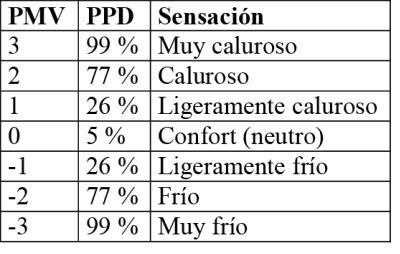
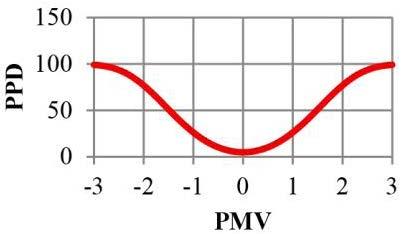
Figura 10. Thermal sensation scale according to Fanger method. Source: Made by the author based on Arballo Kuchen, Alamino-Naranjo and Alonso-Frank (2016).
Category PPD PMV Description I < 6 % -0,2 a +0,2 High level of expectation. Recommended for spaces occupied by people with weakened and/or sensitive defenses with special requirements. II < 10 % -0,5 a +0,5 Normal level of expectation. It should be used for new and renovated buildings. III < 15 % -0,7 a +0,7 Acceptable and moderate level of expectation. It can be used in existing buildings. IV > 15 % <-0,7 ó >+0,7 Values outside the criteria of previous categories. This category should only be accepted for a limited period of the year.
As a study case, it was determined to work with Tobalaba station, as it gathers the greatest number of constraints determining the problem:
Location: It is positioned in the most critical section of line 1, being the station with the largest influx in the network, as it contemplates an estimated 83,593 passengers per day on business days (Herrera, 2018).
Typology: It corresponds to an underground station, so that higher heat concentrations can be experienced as there is a difficulty in ventilation from the outside. In addition, it is a point of combination between lines 1 and 4, so it affects
Table 2. Categorization by thermal expectation levels according to standard UNE-EN 15251. Source: AENOR, 2008.
a greater influx of passengers by supplying routes in more ways and allows studying possible temperature differences between platforms of both lines.
Energy expenditure: Tobalaba station has the largest amount of active ventilation equipment in the network, among which the majority corresponds to nebulizer fans (Metro S.A., 2015).
INTERVENTION PROPOSAL
The proposal is developed from the surface level through the intervention of existing compensation wells to generate an evaporative cooling system. This, incorporating the concept of “Urban Oasis”, through which, in analogy to an oasis in the desert, the initiative seeks to contrast with the built environment and generate a microclimate that becomes the prelude to the entry of air into the station, which, once conditioned, will be introduced by incorporating wind towers that will be linked to the interior. At the same time, it helps to reactivate the areas on compensation wells by generating spaces for social interaction.
For purposes of the study of the proposal and optimization of time, it was determined to develop a single intervention in the western compensation well on line 1 (Figures 11 and 12).
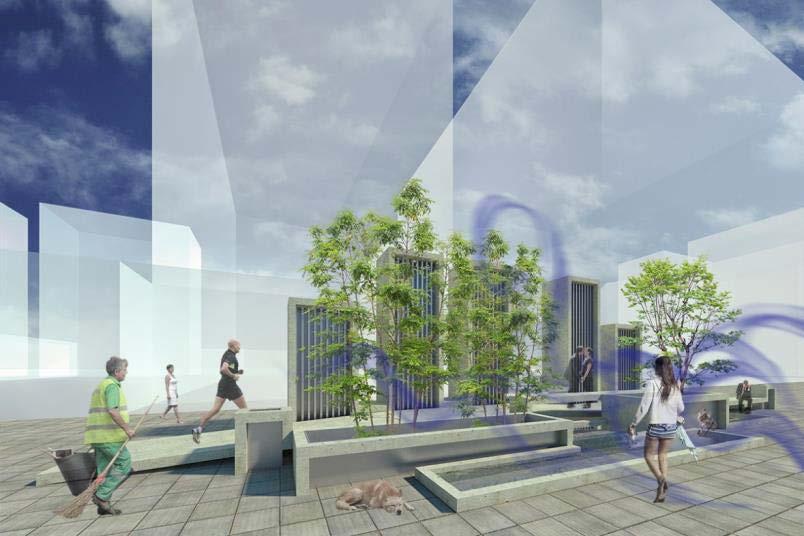
Figura 11. View of the proposal from south sidewalk. Source: Made by the author.
VALIDATION OF THE PROPOSAL
FIELD MEASUREMENTS
As shown in Figure 13, line 1 of Tobalaba station concentrates the highest temperatures, while towards line 4, despite experiencing differences of only 2.0ºC with respect to the previous one, the problem is only evident at the most critical moments. This may be due to the lower circulation of trains to the substation of line 4 because it is terminal, with the understanding that the operation of trains represents the highest percentage of internal thermal loads. On the other hand, the location of line 4 at greater depth can generate a tendency towards thermal stability, especially considering its location under San Carlos channel, which has a lower radiant temperature.
The differences of the station with respect to the outside can reach 7.9ºC on average, reaching maximums close to 33ºC, which is explained by the zero incidence of solar radiation inside and by the presence of high internal thermal loads, mainly based on the influx of passengers and the frequency of trains (higher during peak hours and business days). Meanwhile, the relative humidity inside reaches very low levels, around 40%, which is due mostly to temperature, in an inversely proportional sense, and evidences the dryness of the air.
ENERGY SIMULATION
Weather Due to the wide thermal oscillation that Santiago experiences, great climatic differences are perceived in winter and summer. In December 20th, the recorded temperature is high, reaching the maximum during the
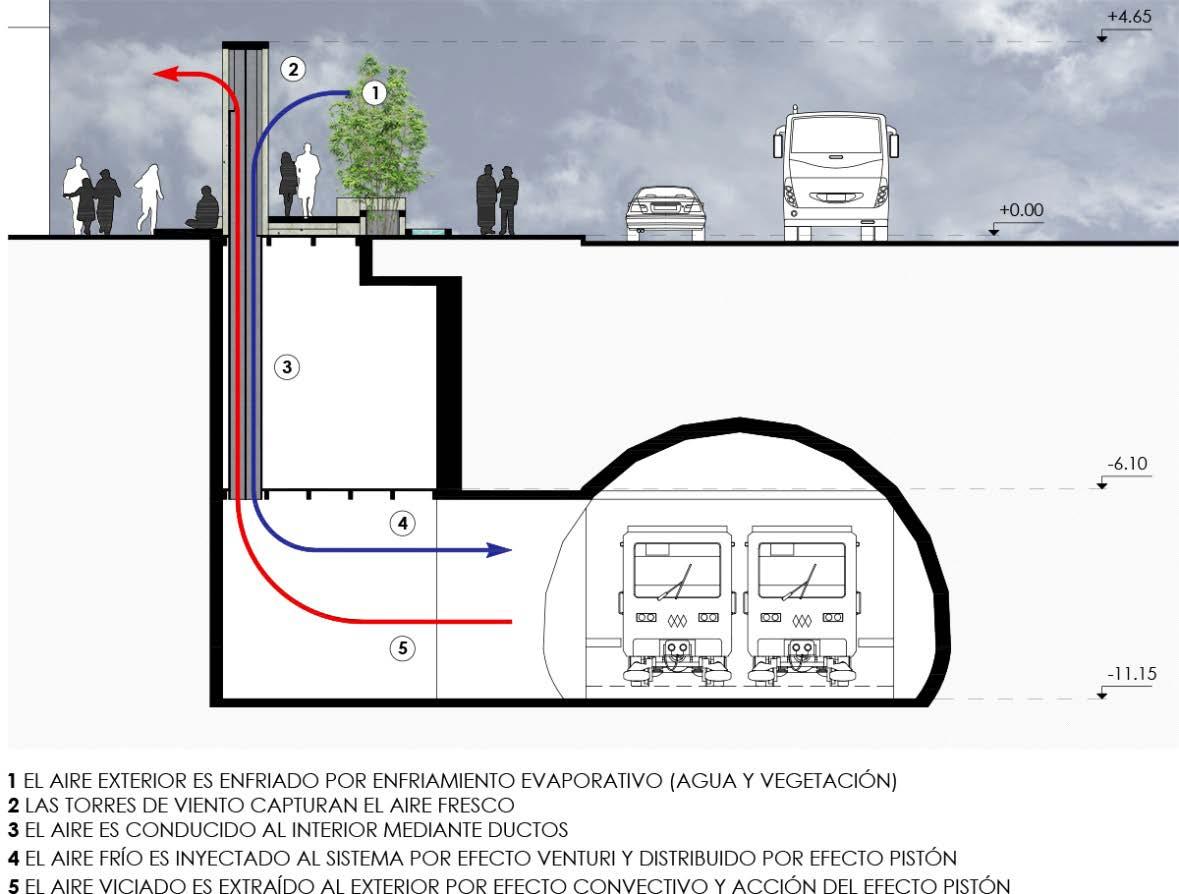
Figura 12. Cross-section of proposed A-A’. Source: Made by the author.
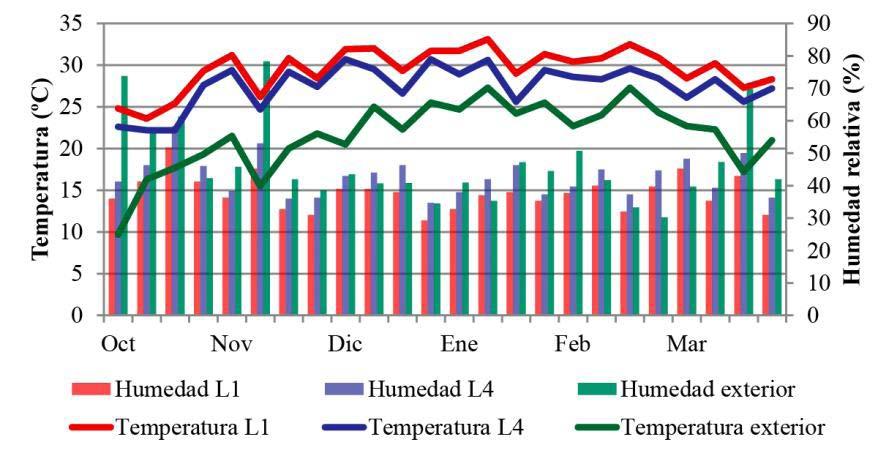
24 Oasis urbano: Una propuesta de acondicionamiento térmico para el metro de santiago Esteban Omar Bugueño Lara Revista Hábitat Sustentable Vol. 9, N°. 2. ISSN 0719 - 0700 / Págs. 16 -29 https://doi.org/10.22320/07190700.2019.09.02.02
Parameter Winter Summer
August 1st December 20th
6:00 18:00
Dry bulb temperature -5,8ºC 32,0ºC
Wet bulb temperature -5,8ºC 18,3ºC
Relative humidity 100% 26% Wind speed 0,0m/s 4,1m/s Direction of the wind South-North
Table 3. Average weather parameters for Santiago. Source: Made by the author.
year, which translates into low relative humidity. In August 1st, however, the situation is the opposite, registering the lowest temperature of the year, with a relative humidity of 100%, which implies that water steam that no longer admits air condenses as dew. Wind behavior also varies in both situations, but in general the speed is not considerable, which could harm the strategies contemplated in the proposal (Table 3).
Station The concentration of high temperatures on platform occurs, particularly in December 20th, when the air temperature reaches the most critical parameter (Table 4). This is a direct consequence of internal thermal loads inside the station, which are also stressed by the zero air velocity apart from
Parameter Winter Summer
Optimal range August 1st December 20th 6:00 18:00 Current Proposed Current Proposed UNE-EN ISO 7730 Air temperature 28,2ºC 24,6ºC 34,3ºC 31,8ºC 10 to 30ºC Relative humidity 45% 45% 35% 50% 30 to 70 % Air speed 0,0m/s 0,1m/s 0,0 m/s 0,1 m/s <1 m/s
Table 4. Results of the energy simulation. Source: Made by the author based on AENOR, 2006.
the air produced by convective effects. In general terms, the proposal does not change this situation to a greater extent, but it does begin to show the entry of air from the ventilation well, being able to increase and reach more acceptable values with the increase in circulation at the exit point (Figures 14 and 15).
It is worth mentioning, however, that the air movement associated with active ventilation systems and the air flow induced by the piston effect of trains, which can reach values close to 1.8m/s in very determined areas and moments are not considered (Herrero, 2009, p. 79).
Regarding air temperature, the implementation of the proposal achieves an average reduction of 3.6ºC in winter
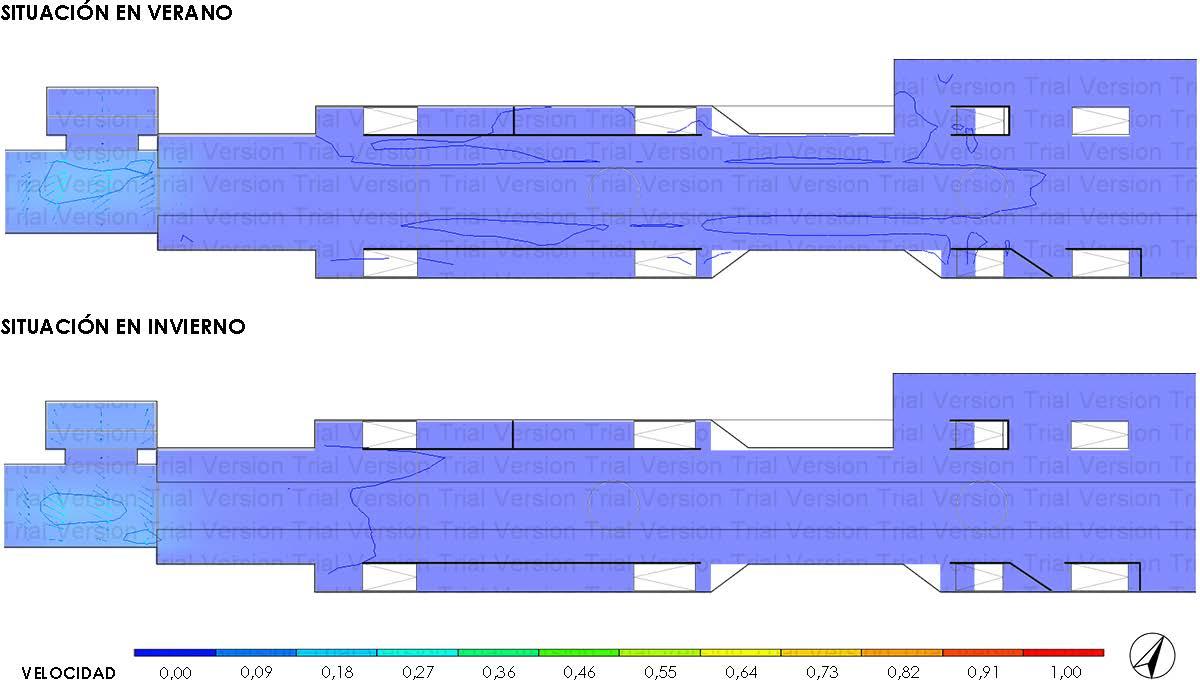
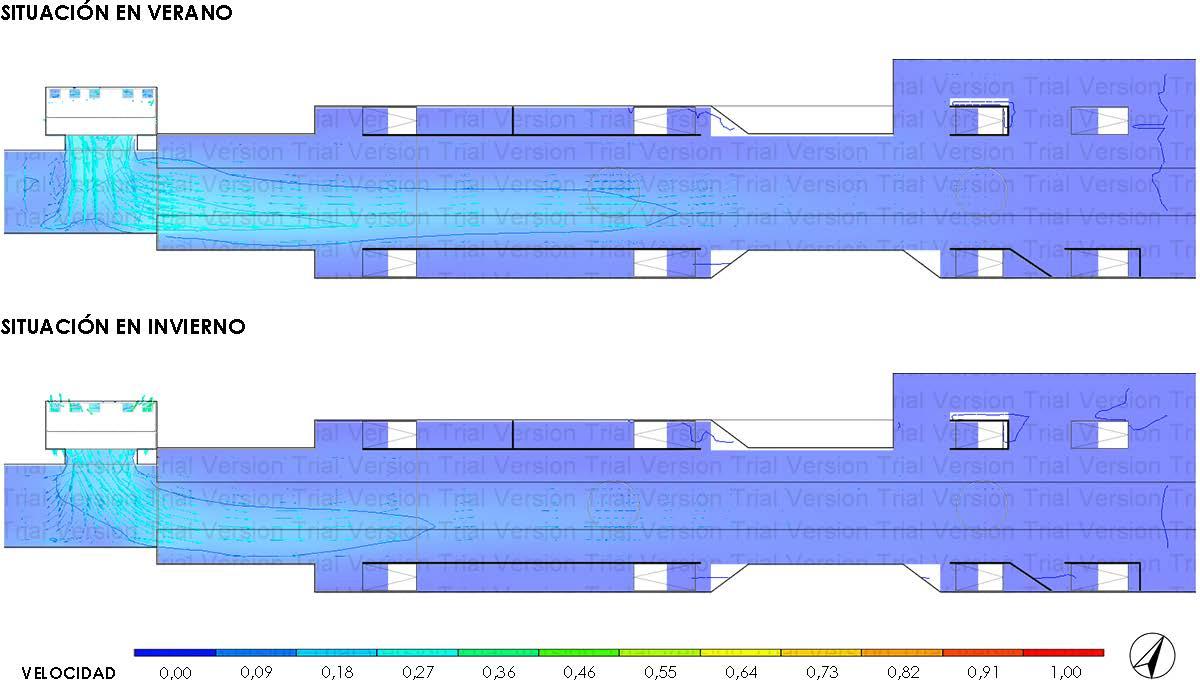
Figura 15. Air speed for the existing situation. Source: Made by the author.
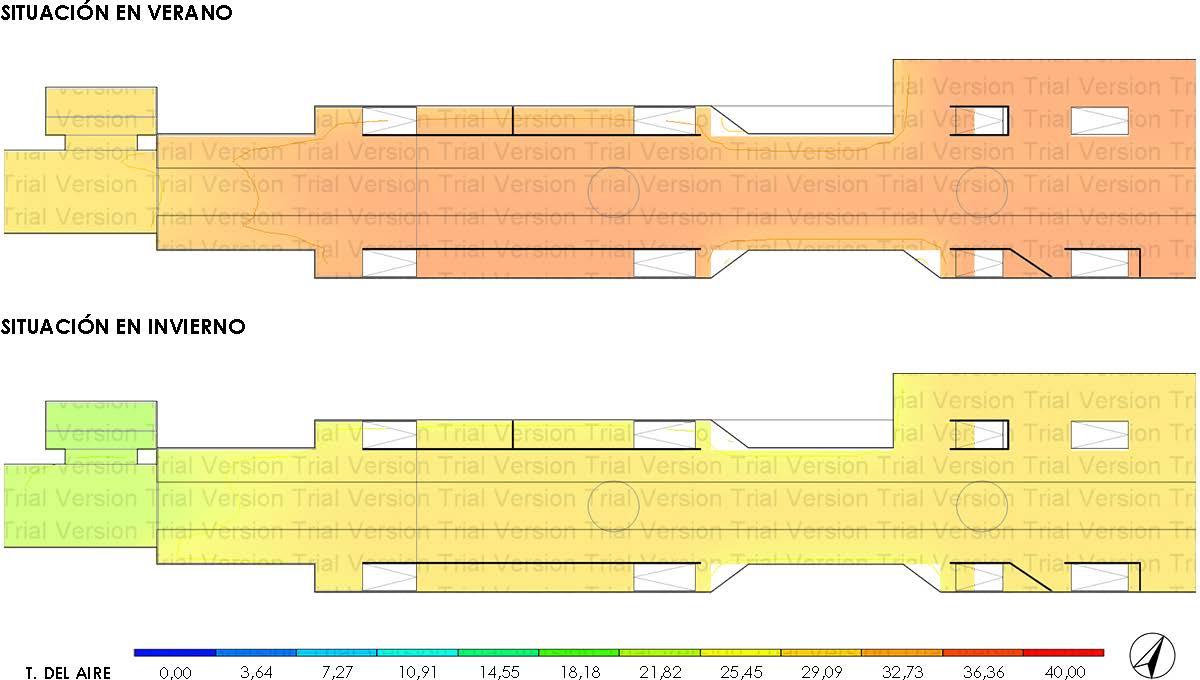
Figura 16. Air temperature for the existing situation. Source: Made by the author.
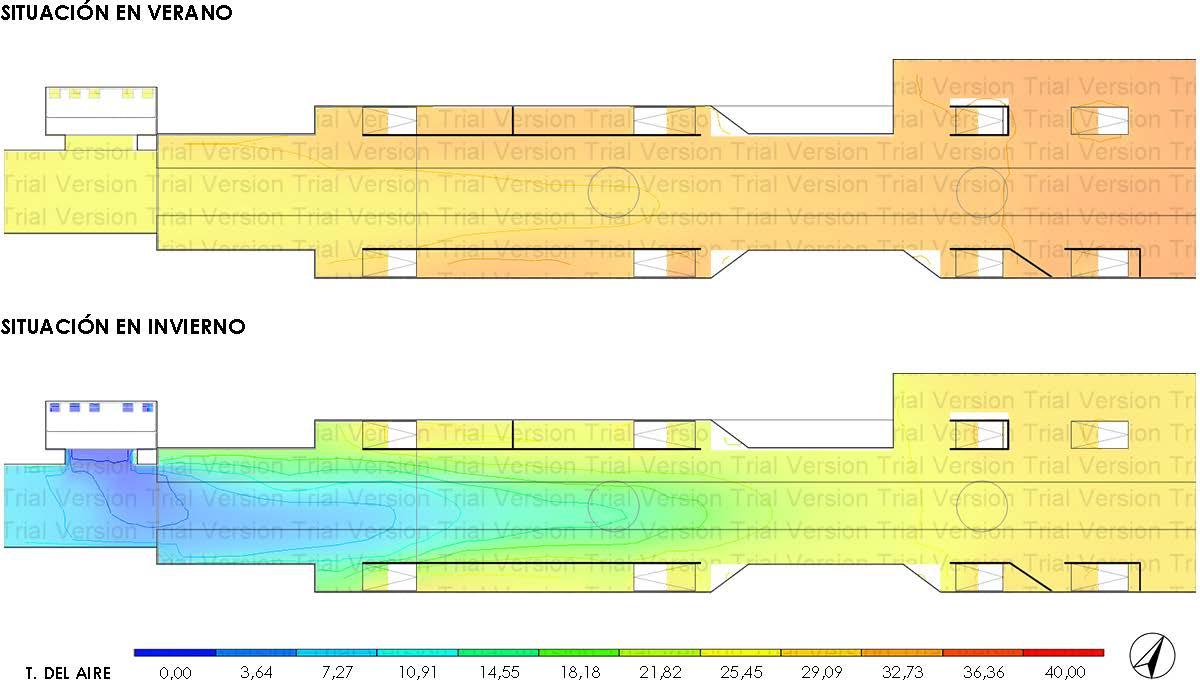
26 Oasis urbano: Una propuesta de acondicionamiento térmico para el metro de santiago Esteban Omar Bugueño Lara Revista Hábitat Sustentable Vol. 9, N°. 2. ISSN 0719 - 0700 / Págs. 16 -29 https://doi.org/10.22320/07190700.2019.09.02.02
Index Winter Summer August 1st December 20th 6:00 18:00 Optimal range
Current Proposed Current Proposed UNE-EN ISO 77301 UNE-EN ISO 152512
PMV 1,36 0,81 2,65 2,35 -2,0 a +2,0 -0,7 a +0,7 PPD 44% 19% 96% 90% <77 % <15 % Category IV IV IV IV I a III
Tabla 5. Thermal sensation indicators. Source: Made by the author based on the indicated sources
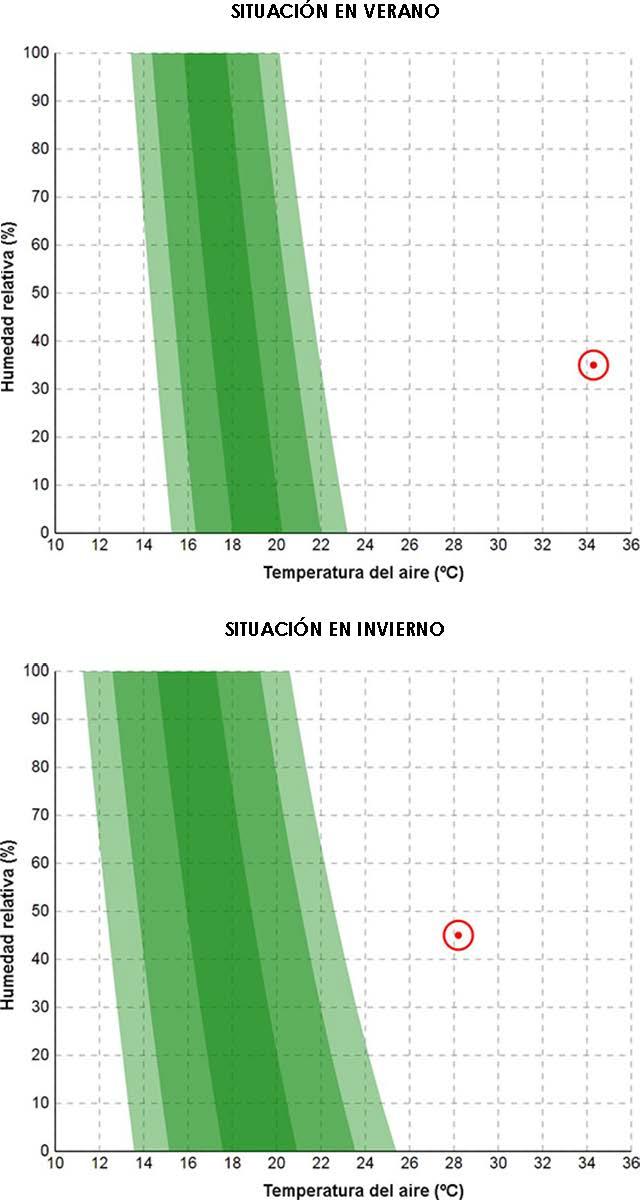
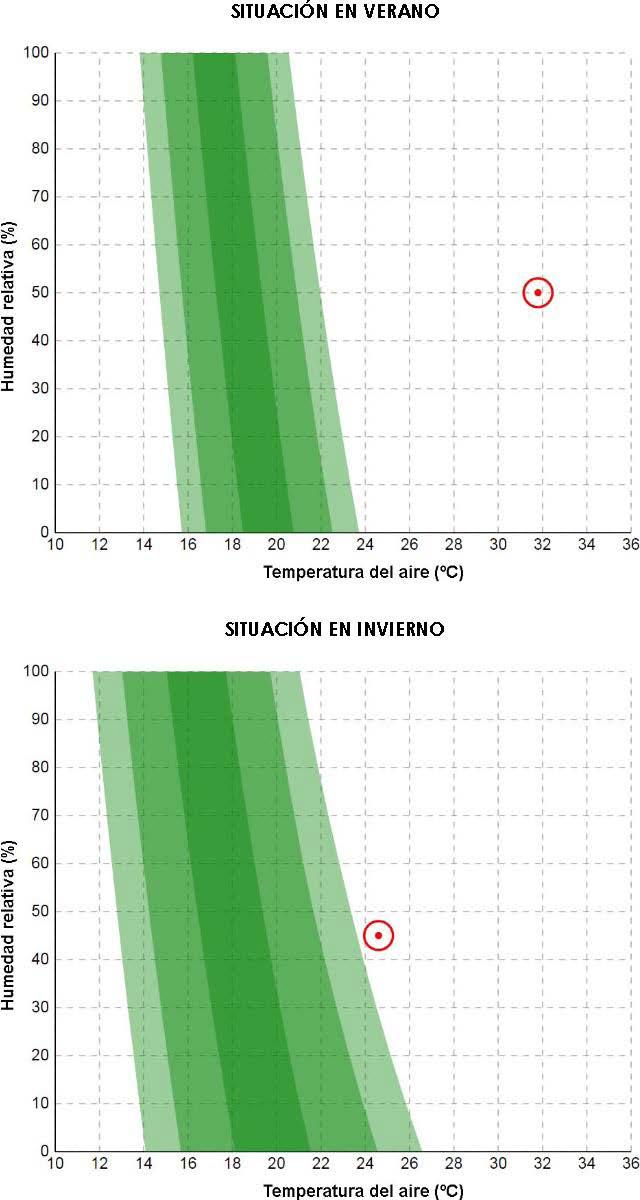
Figura 18. Hygrothermal comfort of the existing situation according to standard UNE-EN 15251. Source: Made by the author based on Hoyt et al., 2017. Figura 19. Hygrothermal comfort of the proposal according to UNE-EN 15251. Source: made by the author based on Hoyt et al., 2017.
and 2.5ºC in summer. These values are even more favorable than those obtained from field measurements for the substation of line 4 where, despite the small difference, a considerable change is already perceived.
The relative humidity inside is low for both situations, which guarantees the proper functioning of the evaporative cooling system, which also helps to stabilize these values due to the evaporation of water and humidification of air.
Temperature problems are accentuated, in general, as distance is greater from the existing compensation well, which shows that, for both situations, the temperature produced by internal thermal loads is higher than the outside temperature (Figures 16 and 17).
When determining the scale of thermal sensation by Fanger method (Table 5), values are obtained that represent a very hot (PMV ≈ 3) and hot (PMV ≈ 2) environment in summer and a slightly hot environment (PMV ≈ 1) in winter. Although in practice during winter it could be pleasant to stay on the platform, the Fanger method considers clothing, with the aim of determining a comfort such that it is not necessary to vary the garments to adapt to a certain environment.
The proposal, although maintaining similar values, manages to reduce the estimated percentage of unsatisfied people in the platform area by 6%, in December 20th, and by 25%, in August 1st, thus being classified in category IV that it is acceptable only for the most critical periods.
Units per station
Unit cost Invesment (M$) Operation (M$) 3 Maintenance (M$)
Total cost Investment (M$) Operation (M$) 3 Maintenance (M$) Mega fans Nebulizer fans Proposal
2 28 2
12.000,0 a 15.000,0 1 1700,0 a 2000,0 1 18906,1
210 70
10.074,5 10.074,5 98,1 5
24.000,0 a 30.000,0 1 47600,0 a 96.000,0 1
420 1.960,00 37.812,2
10.074,5 10.074,5 196,2 5
1 Metro S.A., 2013.
2 Estimated value according to the estimated budget of the works based on Ondac, 2018.
3 Estimated value considering an operating period of 7 months (summer period).
4 Estimated value based on estimated maintenance costs for active ventilation based on the National Statistics Institute, 2019.
5 Estimated value based on the cost per m2 of green area for the commune of Providencia (Guzmán, 2017)
* M$= Thousands of Chilean pesos.
If these values conform to UNE-EN ISO 7730 standard, in neither case would this be fulfilled by December 20th, while in August 1st the situation would be favorable. However, UNE-EN 15251 standard, being more precise, determines values outside comfort for both situations, although the critical scenario is in summer anyway.
Figures 18 and 19 allow determine the relative humidity and air temperature values that would be required under the rest of the conditions registered according to UNEEN 15251 standard, being able to conclude that, despite temperature reductions obtained with the intervention, comfort for both situations remains unfulfilled. This makes it necessary to reduce the air temperature by around 10ºC, considering a relative humidity between 30 and 50% for the most unfavorable situation in summer.
ASSESSMENT OF THE PROPOSAL VIABILITY
COST As shown in Table 6, referring to investment costs, the proposal represents the highest investment per unit, but since only two are required at the station, the total investment is lower than that considered by nebulizer fans, but not by mega fans. The above is explained by the
Tabla 6. Unit and total costs for analyzed alternatives. Source: Made by the author based on the indicated sources
quantity of materials and labor required for the proposal, which, added to longer construction times with respect to other alternatives, may be the least profitable option at this point.
However, in relation to operation and maintenance costs involved, it is evident that the proposal is the most convenient option, far from the other alternatives. This is one of the main characteristics of passive conditioning systems, which do not require specialized personnel for maintenance or consider expenses for the use of electricity. In the long term, these conditions determine the profitability of the proposal, which is estimated to be profitable between the first and second year of operation, with respect to mega fans.
been compared (Table 7), it is estimated that, although the proposal alone achieves a smaller contribution in terms of temperature reduction, its values could be equal to the operation of mega fans if 2 units are considered by season, the situation may be more favorable or not depending on the area in which it is determined.
Nebulizer fans lead in terms of temperature reduction, but their extent is very limited compared to other alternatives. Even so, the modes of operation of each alternative allow determine that these could be complementary.
Despite the above, the initiative associates other benefits linked to the contribution of public space on the surface that can favor the effectiveness of the investment.
System Units per station Scope Temperature reduction (ºC) Operation Mega fans 2 Platform 3 to 5 in peak time Piston effect Nebulizer fans 28 Up to 2 meters on platform 6 per unit Nebulized water Proposal 2 Platform About 3 per unit Fresh air intake
Tabla 7. Efficacy of the analyzed alternatives. Source: Made by the author based on Metro S.A., 2010.
CONCLUSION
The problem of high temperatures inside underground railway stations, although often it turns out not to be a priority issue to address, leads from health conditions to social exclusion, in the most critical periods, and not only occurs in the Metro of Santiago, but also in underground railway systems around the world, independent from weather conditions. This is due to the fact that the problem is linked to the presence of high internal thermal loads, mainly due to the operation of trains, which may result in temperatures up to 34ºC in summer for the platform area.
The measures that have been taken in Santiago Metro include the use of active ventilation systems that, in addition to contemplating high energy expenditure, have not achieved completely effective results, which leads to the implementation of new plans year after year. In other places of the world the situation is similar, highlighting solutions based on mixed conditioning systems (passive and active), but which may not be viable in countries that have more limited resources or when other priorities are in mind. Therefore, architecture has much to contribute from the introduction of passive conditioning strategies and qualitative factors that prioritize the user.
The “Urban Oasis” proposal, although it does not fully solve the problem, contributes by demonstrating that it is possible to match and/or complement the scope of active systems by implementing passive conditioning systems, having the advantage of greatly reducing costs of maintenance and operation due to zero energy expenditure, and being able to reduce investment costs when preexistence is used. At this point, the use of existing compensation wells gives the proposal a double functionality, allowing to contribute to the public space on the surface through spaces based on versatility and spatial ambiguity.
ACKNOWLEDGMENTS
I thank Professor Magister Architect Rodrigo Aguilar of Universidad de Santiago, Chile, for his constant support and guidance during the development of this work.
BIBLIOGRAPHIC REFERENCES
AENOR (2006). Ergonomía del ambiente térmico. Determinación analítica e interpretación del bienestar térmico mediante el cálculo de los índices PMV y PPD y los criterios de bienestar térmico local (ISO 7730:2005). UNE-EN ISO 7730:2006. Madrid: AENOR.
AENOR (2008). Parámetros del ambiente interior a considerar para el diseño y la evaluación de la eficiencia energética de edificios incluyendo la calidad del aire interior, condiciones térmicas, iluminación y ruido. UNE-EN 15251:2008. Madrid: AENOR.
AMERICAN SOCIETY OF HEATING, REFRIGERATING AND AIRCONDITIONING ENGINEERS, INC. (2017). AHSRAE Handbook Fundamentals. Atlanta: ASHRAE.
Arballo, B., Kuchen, E., Alamino-Naranjo, Y. y Alonso-Frank, A. (2016). Evaluación de Modelos de Confort Térmico para Interiores. En: VIII Congreso Regional de Tecnología de la Arquitectura – CRETA, Universidad Nacional de San Juan, Islas Malvinas.
Arden, C. (2013). London underground tunnels to heat homes. Islington now. Recuperado de http://islingtonnow.co.uk/londonunderground-tunnels-to-heat-homes/. Con 106 ventiladores gigantes en 8 estaciones Metro capeará el calor (2018). La Hora. Recuperado de http://www.lahora. cl/2018/11/106-ventiladores-gigantes-8-estaciones-metrocapeara-calor/.
Fanger, P. O. (1973). Thermal Comfort. New York: McGraw-Hill Book Company.
Guzmán, J. M. (2017). La Gestión Municipal de áreas verdes en el gran Santiago. Santiago: Fundación Mi Parque.
Hendriks, M., Cubillo, J. M. y Cuesta, M. (2011). Refrigeración del Metro con Geotermia. Retos y experiencias de un caso real: Metro Madrid - Estación Pacífico. El Instalador, (482), 118-126.
Herrera, J. (2018). Tobalaba, Manquehue y La Cisterna son las estaciones de metro con mayor afluencia. El Mercurio recuperado de https://gobierno.udd.cl/cpp/noticias/2018/07/03/tobalabamanquehue-y-la-cisterna-son-las-estaciones-de-metro-con-mayorafluencia-el-mercurio/.
Herrero, R. (2009). Sistemas de Ventilación en Ferrocarriles Metropolitanos: Panorámica y Estrategias de Diseño. Proyecto fin de Carrera - Ingeniería Industrial. Universidad Carlos III de Madrid, Madrid, España.
Hoyt, T., Schiavon, S., Piccioli, A., Cheung, T., Moon, D. y Steinfeld, K. (2017). CBE Thermal Comfort Tool. Center for the Built Environment. Recuperado de http://comfort.cbe.berkeley.edu/EN.
Instalan megaventiladores para disminuir el calor en estaciones de Metro (2010). La Tercera. Recuperado de https://www.latercera. com/noticia/instalan-megaventiladores-para-disminuir-el-calor-enestaciones-de-metro/.
Instituto Nacional de Estadísticas (INE) (2019). Índices de Remuneraciones y Costo de Mano de Obra - IR ICMO. Instituto Nacional de Estadísticas Chile. Recuperado de https://www.ine.cl/ estadisticas/laborales/ir-icmo.
Liencura, J. (2019). ¡Estamos fritos! Hasta 38º deben soportar pasajeros del transporte público en Santiago. Publimetro Chile. Recuperado de https://www.publimetro.cl/cl/noticias/2019/01/04/ hasta-38oc-soportar-pasajeros-transantiago-metro.html.
Metro S.A. (2007). Anexos Estadísticos 2007. Santiago.
Metro S.A. (2010). Metro implementa mega ventiladores para disminuir calor en estaciones. Web Metro de Santiago. Recuperado de https://www.metro.cl/noticias/detalle/923.
Metro S.A. (2013). Metro inicia plan de verano 2013-2014. Web Metro de Santiago. Recuperado de https://www.metro.cl/noticias/ detalle/1339.
Metro S.A. (2015). Especificaciones técnicas. Servicio de mantenimiento de sistemas de ventilación industrial y nebulizadores en estaciones de Metro S.A. Santiago.
ONDAC. Manual de Costos: Materiales y Actividades para la Construcción. Santiago: ONDAC, 2018.
The Norwegian Metereological Institute (2016). WeatherSpark. Recuperado de https://weatherspark. com/#!dashboard;loc=-33.4184,-70.6020.








